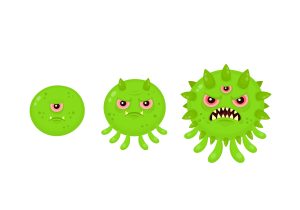Medisafe® WHAT DOES MEDISAFE DO?
WHAT DOES MEDISAFE DO?
Quite simply, it kills superbugs. In fact, it’s proven to kill 99.9% of almost all species of bacteria, including the deadly
MRSA, salmonella and E.coli, and goes on killing them for the lifetime of the additive for up to ten years.
COMPLETELY HARMLESS TO US, DEADLY TO SUPERBUGS
It is also non-carcinogenic, non-mutagenic and non-skin sensitising. It is even approved by the FDA and HSE for indirect or incidental
contact with food. In other words, it is completely harmless to us, but unique and devastatingly effective against these bacteria
MRSA
Methicillin-resistant Staphylococcus aureus is a bacterium responsible for several difficult-to-treat infections in humans. It is also called oxacillin-resistant Staphylococcus aureus.
C DIFFICILE
A Clostridium difficile infection is a bacterial infection that can affect the digestive system, and most commonly affects people who have been treated with antibiotics. The symptoms of a C. difficile infection can range from mild to severe.
E COLI
E. coli is a type of bacteria that lives in your intestines and in the intestines of animals. Although most types of E. coli are harmless, some types can cause bloody diarrhoea and even kidney failure and death.
SALMONELLA
The Salmonella enterica bacterium can cause Salmonellosis, a type of food poisoning. Young children, older adults and people who have impaired immune systems are the most likely to have severe infections.
LISTERIA
Listeria is a bacterium found in soil, water and some animals, including poultry and cattle. It is unlike many other germs because it can grow even in the cold temperature of a refrigerator.
STAPHYLOCOCCUS AUREUS
Staphylococcus aureus is a type of bacterium which causes skin infections, pneumonia, food poisoning, toxic shock syndrome and blood poisoning. Methicillin-Resistant Staphylococcus Aureus or MRSA is resistant to certain antibiotics, making infections harder to treat.
ACINETOBACTER
Acinetobacter is a group of bacteria commonly found in soil and water. Acinetobacter baumannii accounts for about 80% of reported infections which typically occur in intensive care units and healthcare settings housing very ill patients.
KLEBSIELLA PNEUMONIAE
Klebsiella is a type of bacterium that can cause different types of healthcare-associated infections, including pneumonia, bloodstream infections, wound or surgical site infections, and meningitis.
ASPERGILLUS NIGER
Aspergillus niger or A. niger is a fungus which causes a disease called black mould on certain fruits and vegetables such as grapes, apricots, onions and peanuts, and is a common contaminant of food.
PSUEDOMONAS AERUGINOSA
Serious Pseudomonas infections usually occur in people in hospital or with weakened immune systems. Infections of the blood, pneumonia, and infections following surgery can lead to severe illness and death in these people.
PENICILLIUM PURPUROGENUM
Penicillium purpurogenum is a plant pathogen infecting strawberries which also produces rubratoxin, a Mycotoxin which can cause damage or injury to the liver. It is a fungus which is most commonly found on cereal grains.
BACILLUS CEREUS
Bacillus cereus or B. cereus is a type of bacteria that produces toxins which can cause diarrhoea, nausea and vomiting. These bacteria are present in foods and can multiply quickly at room temperature.
SACCHARMYCES CEREVISIAE
Saccharomyces cerevisiae also known as baker’s yeast or brewer’s yeast has been mentioned in a growing number of reports as a cause of invasive infection.
MICRO-ORGANISMS
Pathogens are microorganisms such as bacteria and viruses that cause disease. Bacteria release toxins, and viruses damage our cells.
Find out more about MEDISAFE . Call 01992 462965
or email sales@humphreystretton.com